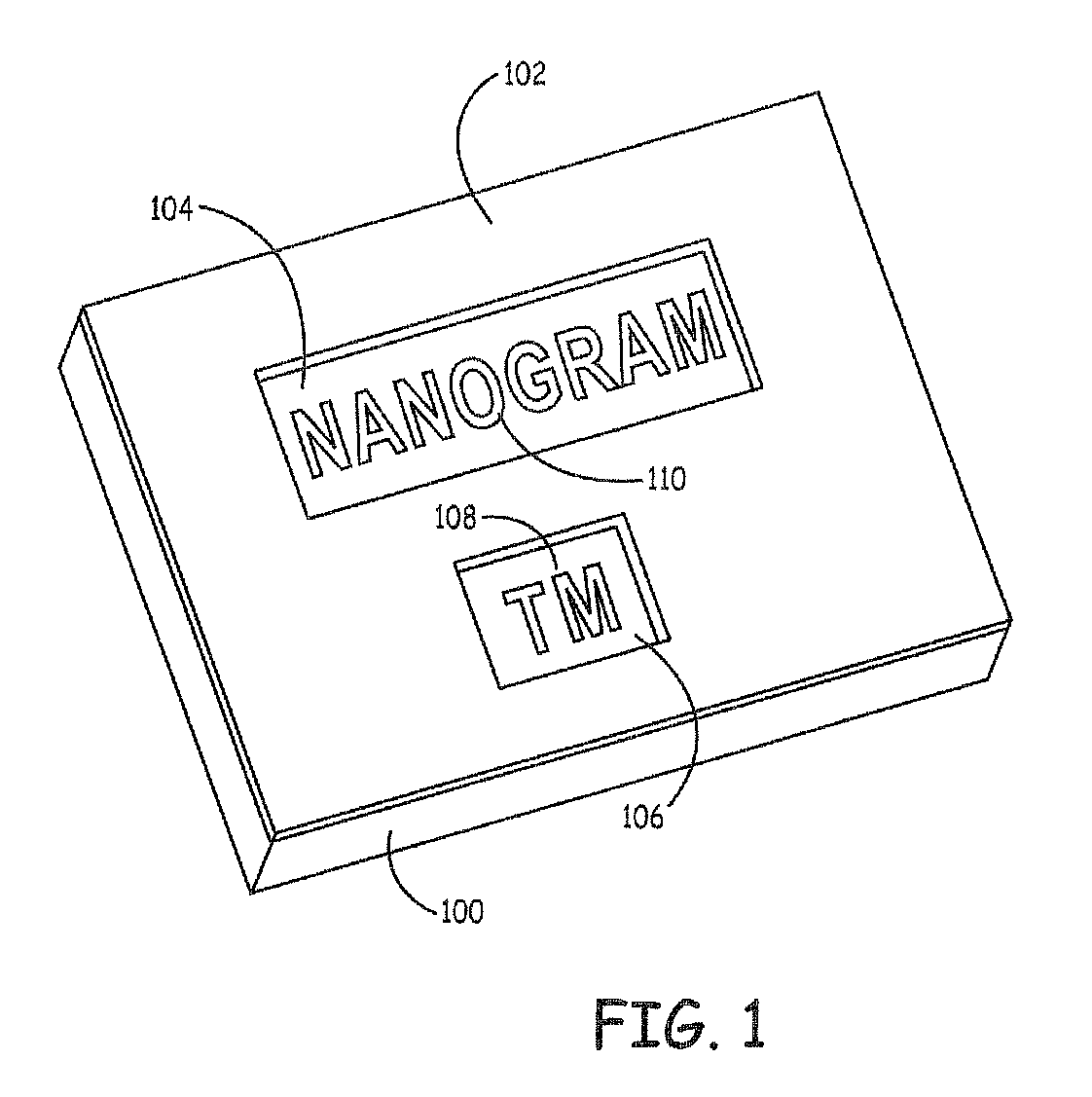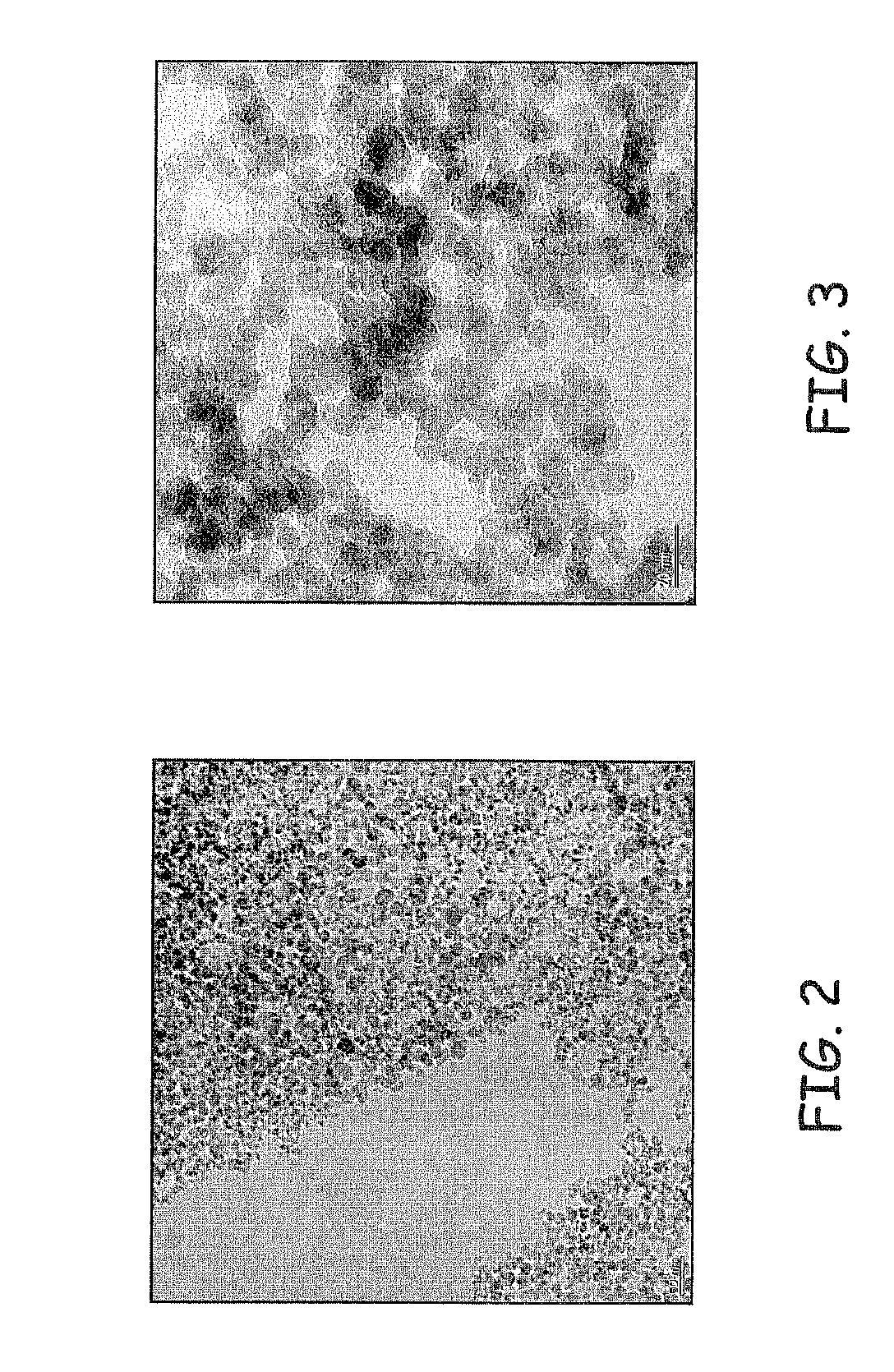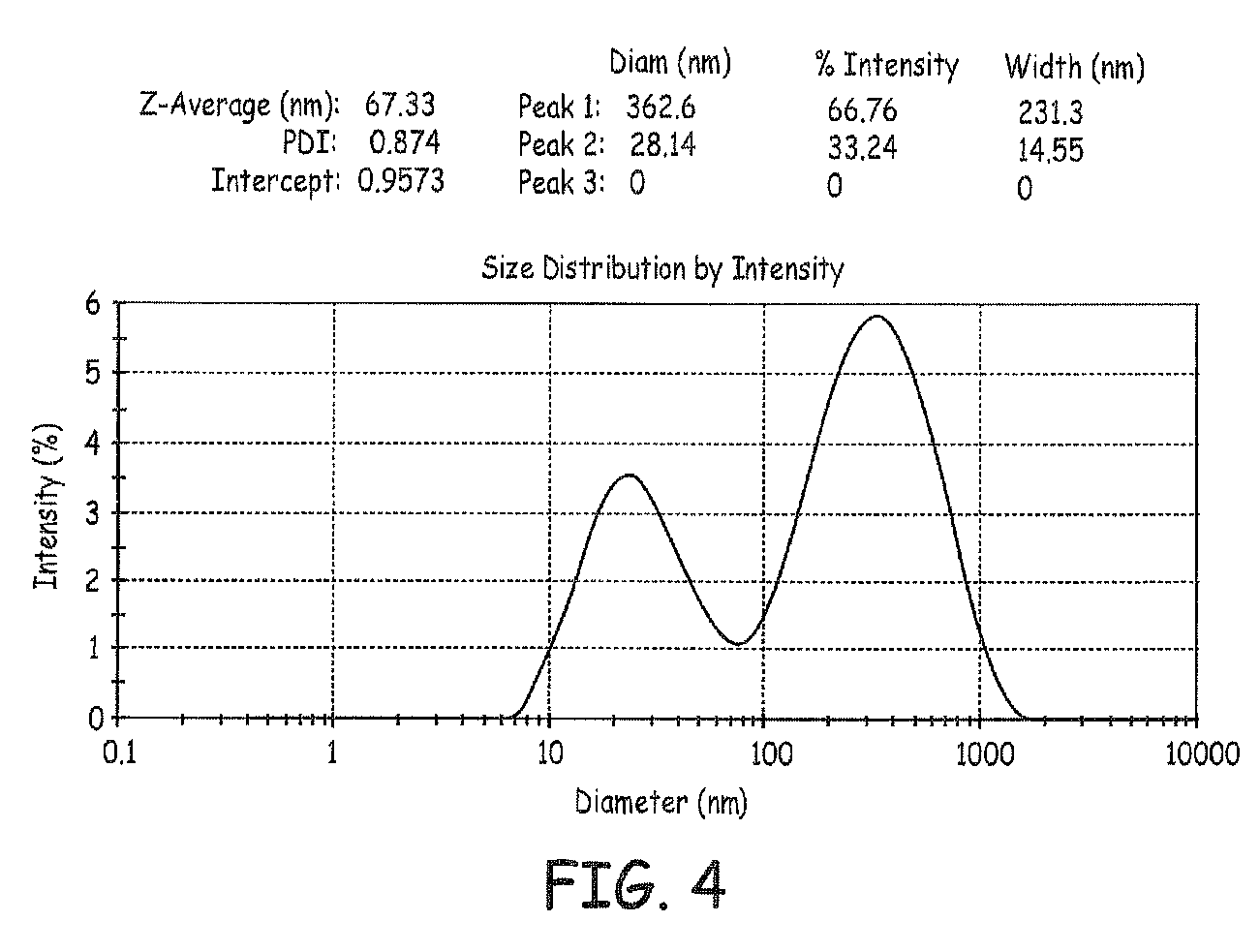Silicon/germanium oxide particle inks, inkjet printing and processes for doping semiconductor substrates
- Summary
- Abstract
- Description
- Claims
- Application Information
AI Technical Summary
Benefits of technology
Problems solved by technology
Method used
Image
Examples
example 1
SiO2 Dispersion in Methyl Ethyl Ketone (MEK)
[0099]This example demonstrates the dispersion and surface modification of silica particles synthesized using laser pyrolysis.
[0100]SiO2 was produced by laser pyrolysis aerosol) with Tetraethoxylsilane (TEOS) as the silicon precursor. The silicon precursor was delivered with as an aerosol with a mixture of ethylene, oxygen and an inert gas serving as the carrier gas. The apparatus was similar to the apparatus in FIGS. 6-8 of U.S. Pat. No. 6,849,334 to Home et al., entitled “Optical Materials and Optical Devices,” incorporated herein by reference. The SiO2 particles had a primary particle size as determined using a transmission electron micrograph of 10-20 nm. Transmission electron micrographs at two magnifications are shown in FIGS. 2 and 3, respectively, for a representative SiO2 nanoparticle sample made from TEOS using laser pyrolysis.
[0101]SiO2 powder (13.6 g, with a BET surface area>236.5 m2 / g) was added to methylethylketone (MEK) to m...
example 2
SiO2 Dispersion in Isopropanol
[0102]This example demonstrated the dispersion of SiO2 nanoparticles in isopropanol as an alternative dispersing liquid. The SiO2 nanoparticles for this example had the same property as the nanoparticles in Example 1.
[0103]SiO2 powder (1.0 g, with a BET surface area 214.0 m2 / g) was added to isopropanol to make a 1% wt mixture. The mixture was sonicated in a bath sonicator for 1-4 hours. Then, N-(2-aminoethyl)-3-aminopropyltrimethoxysilane (0.32 g-1.94 g, Gelest, Inc.) was added to the dispersion and continue sonication for 1-7 hr at a temperature of 25° C.-60° C. The resultant secondary particles sizes were evaluated with dynamic light scattering (DLS) using a Malvern ZetaSizer™ instrument. The distribution of the size of the particles revealed from DLS measurement is shown in FIG. 5 where the particles had an average secondary particle size of about 99.7 nm. SiO2 particles therefore form good dispersion in IPA at 1% wt after modification with N-(2-amin...
PUM
| Property | Measurement | Unit |
|---|---|---|
| volume-average particle size | aaaaa | aaaaa |
| volume-average particle size | aaaaa | aaaaa |
| volume-average particle size | aaaaa | aaaaa |
Abstract
Description
Claims
Application Information
 Login to View More
Login to View More - R&D
- Intellectual Property
- Life Sciences
- Materials
- Tech Scout
- Unparalleled Data Quality
- Higher Quality Content
- 60% Fewer Hallucinations
Browse by: Latest US Patents, China's latest patents, Technical Efficacy Thesaurus, Application Domain, Technology Topic, Popular Technical Reports.
© 2025 PatSnap. All rights reserved.Legal|Privacy policy|Modern Slavery Act Transparency Statement|Sitemap|About US| Contact US: help@patsnap.com



